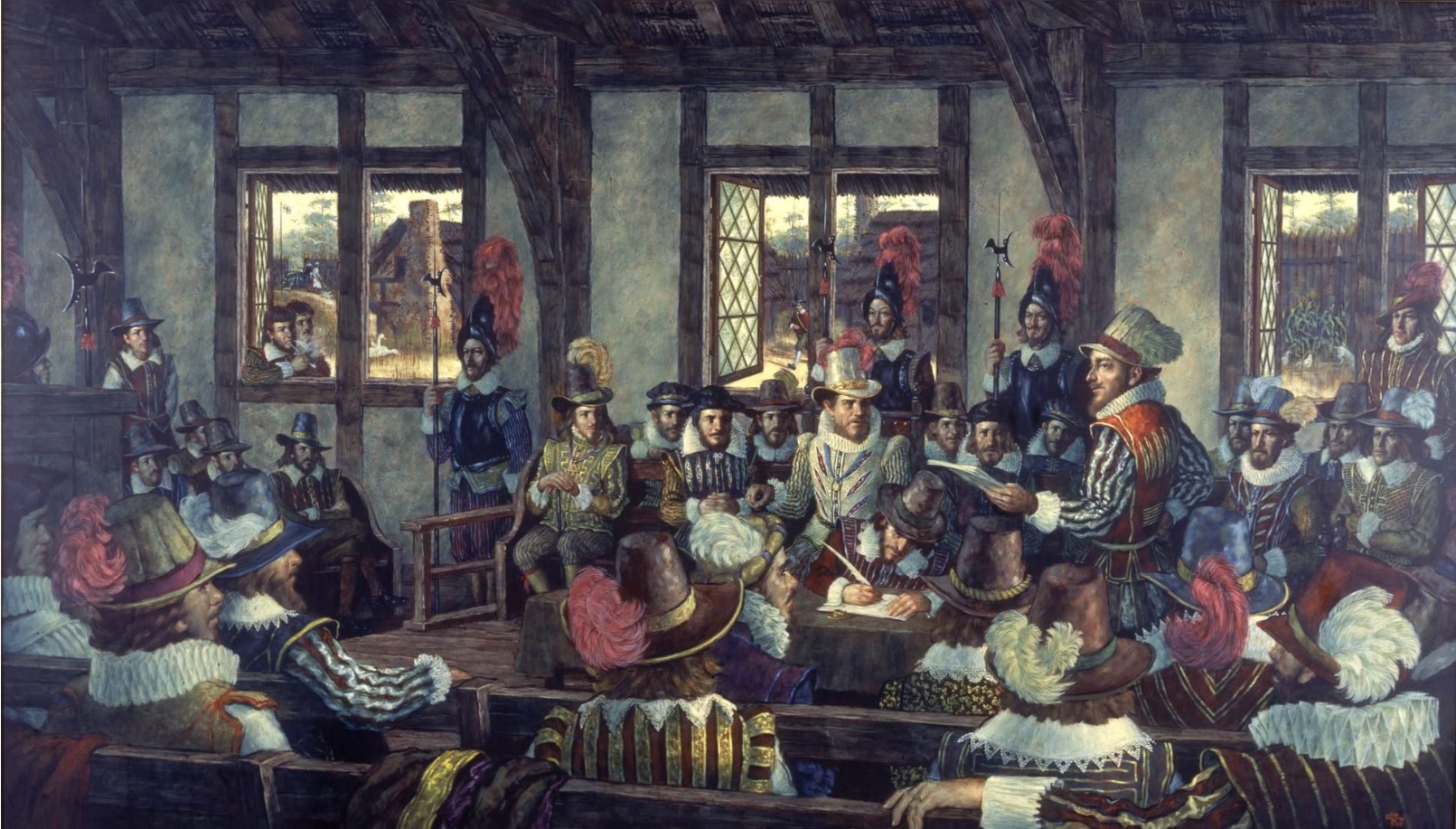The first meeting of the General Assembly of Virginia took place at the church building in Jamestown on 30 July 1619. The session lasted for four hot days, not including a Sunday. The founding of the first and oldest representative legislative body in the western hemisphere was an event of epic importance in Virginia and the United States.
It may surprise people that the records of the first General Assembly are not preserved in the Virginia state archives, which are in the Library of Virginia in Richmond. There are two important reasons why that is not the case.
The first reason is that the General Assembly was not technically a governmental institution. It was a new instrument that the Virginia Company of London created to manage its small settlement in the New World. Consequently, the records belonged to the company, a chartered speculative investment enterprise that operated under a royal charter and had settled the colony.
The other reason is that any copies of the 1619 documents that may have remained in the General Assembly’s possession would have been destroyed along with most of the legislative and executive records of the colony in one of the British raids on Richmond during the American Revolution. In fact, histories of Virginia written before that time suggest that no copy was in the colony even then. The one copy that now exists is in the Colonial Series, National Archives of the United Kingdom. It is the first document in the vast archival record of the British Empire.
The Virginia Colonial Records Project procured microfilm copies of the journal in the 1950s, and these are available in the Library of Virginia, the Virginia Museum of History and Culture, the library at the University of Virginia, the Colonial Williamsburg Foundation, and the Jamestown-Yorktown Foundation. In 1969, state archivist William J. Van Schreeven and George H. Reese, the director of publications at the Library of Virginia (then known as the Virginia State Library), published Proceedings of the General Assembly of Virginia, July 30–August 4, 1619, which has a facsimile of each page of the handwritten journal and on the facing page a transcription.
The first meeting of the General Assembly resembled a very early meeting of Parliament, with the king (in this instance the governor) meeting with his principal advisors (members of the Council of State) and twenty-two elected burgesses from eleven settlements along the lower reaches of the James River. The word burgess then signified an adult male of sufficient social and economic standing to be permitted to take part in public affairs.
The first assembly acted very much like a legislature, even though it was actually an agency of the Virginia Company. The members generally followed correct parliamentary procedure for the time, and residents of Virginia were punished if they violated the laws the assembly passed. Members of the assembly were certainly aware that as early as the second company charter of 1609, the king had required that “laws, statutes, and pollicie” in the colony conform “as convenientlie maie be” to those of England. But the assembly then (and for several decades thereafter) also issued orders of an executive nature and punished miscreants as a court. Separation of executive, legislative, and judicial powers slowly evolved during the remainder of the seventeenth century.
The 1619 assembly issued orders and adopted laws to govern the conduct of servants, control relations with Indians, and regulate the increasingly important production of and trade in tobacco. The first assembly also endowed church wardens and ministers with specific responsibilities, directed ministers to conduct church services “according to the Ecclesiasticall lawes and orders of the churche of Englande,” and in effect
established the Church of England as the official church of Virginia. Seventeenth-century Virginians regarded this step as obvious, natural, and necessary, even though 21st-century Americans may have difficulty understanding that the law allowed only one religious denomination to exist, that the one church was part of the government, and that the government was also a part of that one church.
After King James I abolished the Virginia Company in the spring of 1624, he and his successor, Charles I, permitted the General Assembly to continue meeting annually, which in effect made the assembly into an institution of English government in the colony.
In 1619 and for nearly two dozen more years the General Assembly conducted its business in unicameral session with the governor, councilors, and burgesses all meeting together. In 1643 the elected burgesses began meeting separately as the House of Burgesses. Excellent scholarship, much of it done in the Library of Virginia during the 1970s and 1980s, clearly demonstrated that the assembly became bicameral in 1643 and that before that date there was no separate House of Burgesses. Nevertheless, some writers still incorrectly declare that the House of Burgesses was founded in 1619.
The scholars who dated the creation of the House of Burgesses wrote two books, both published by the Library of Virginia, that fully document the early history and evolution of the General Assembly of Virginia: Jon Kukla, Speakers and Clerks of the Virginia House of Burgesses, 1643–1776 (1981), and Warren M. Billings, A Little Parliament: The Virginia General Assembly in the Seventeenth Century (2004). The library’s Dictionary of Virginia Biography project contributed profiles of several 1619 assembly members to House History, an online reference guide to the history and members of the lower house of the General Assembly created by G. Paul Nardo, clerk of the House of Delegates, and members of his staff.
–Brent Tarter, a founding editor of the Dictionary of Virginia Biography







